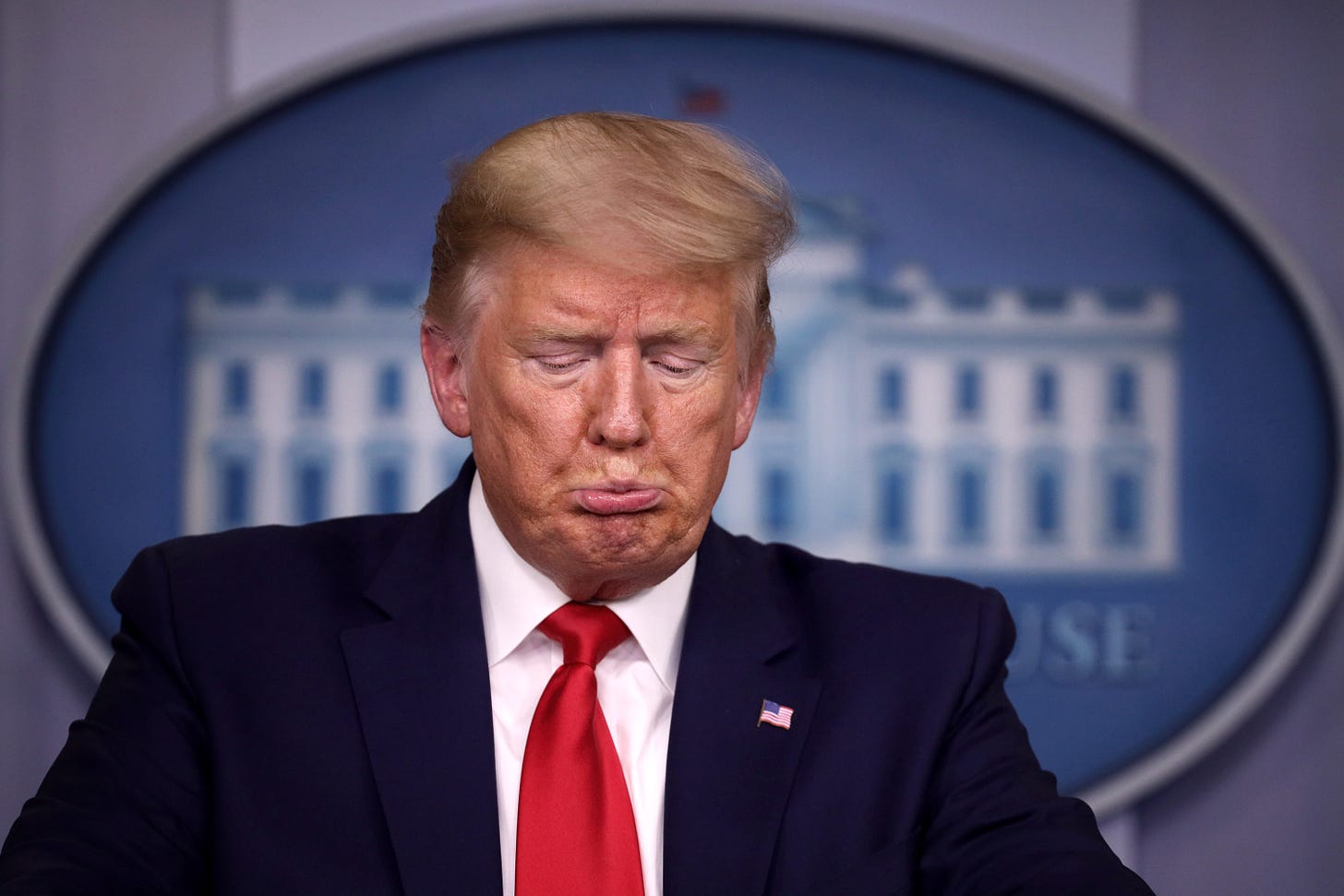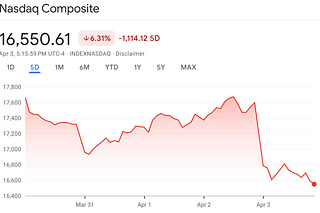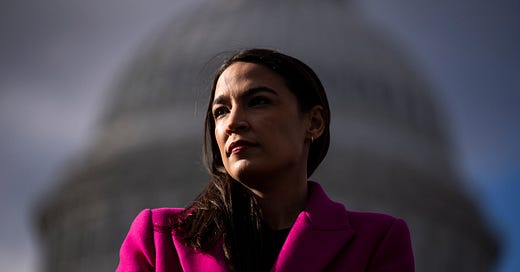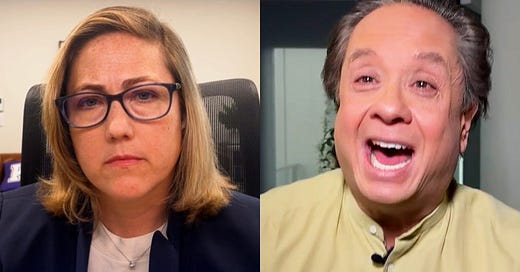
America Is Hostage to the Stories Trump Wants to Tell About Himself
The president doesn't care about reality. He only cares about the stories he wants to tell about himself.

Donald Trump’s character flaws have shaped—and are continuing to shape—the federal government’s disastrous response to COVID-19.
From the day Trump took office, Trumpism has wreaked havoc on our democracy, our culture, our standing in the world, and the very soul of our nation. But this time it’s different.
This time it’s killing people.
It all started with Trump’s statements about the virus in the early days of the pandemic. He persisted in telling the nation that the virus was “under control,” that we’d “pretty much shut it down,” and that the weather in April would “kill the virus.” Even deep into February, more than a month into the crisis, Trump continued to insist that “we could be at just one or two people over the next short period of time,” and “like a miracle, it will disappear.”
While it wouldn’t be inaccurate to label these misleading statements as “lies,” in a way that gives Trump too much credit. In order to tell lies, one has to be playing on the field of truth and falsity. Trump isn’t. He appears to be indifferent to the commonly accepted notion of truth, not necessarily hostile to it. He is, to coin a word, a-truthful.
Trump plays on a different field: the field of narratives. His reality is whatever conforms with his preferred narrative. Everything else, he either refuses to believe, is unable to believe, or dismisses as fake.
Trump’s narrative at the beginning of the COVID-19 crisis was that by acting before anyone else to ban travel from China, when “everybody said, it’s too early, it’s too soon,” he had reduced U.S. COVID-19 cases to “a very small number.”
But every single thing about this narrative was false.
There was never a travel ban, only restrictions with gaping exceptions that included Taiwan, Hong Kong, Macau, and every American returning home from China.
Trump did not act before everybody else.
His travel restrictions were effective as of February 2. Dozens of countries, from Afghanistan to Vietnam, also issued travel restrictions in the first week of February, many of which were effective before February 2.
Trump did not act contrary to the advice of government health care professionals. According to HHS Secretary Alex Azar, the restrictions were “the uniform recommendations of the career public health officials.”
And Trump’s limited China travel restriction didn’t hold U.S. COVID-19 cases to a very small number. At most, it bought a little time, which Trump promptly squandered by inaction, resulting in more COVID-19 cases in the U.S. than anywhere else in the world. (Though of course it’s possible that China has more cases and is lying about their numbers—justy as they’ve lied about nearly everything else concerning the pandemic they allowed to fester.)
But forget—just for a moment—about the dishonesty of Trump’s narrative and what it says about Trump’s character.
The real problem is that his false narrative shaped the actual, real-world action—or, more accurately, inaction—of the government in response to the crisis. And not just the federal government. Republican governors across the nation—not all of them, but enough to cost many, many lives—adopted Trump’s narrative and acted accordingly. As late as March 30, 15 states had issued neither stay-at-home orders nor ordered the closure of non-essential businesses.
All 15 have Republican governors.
The original sin of Trump’s response to the crisis was the failure to bring a sense of urgency to testing: “When it comes to managing an outbreak, testing is the foundation on which everything else rests. And the ability to test widely and quickly is of maximum importance at the beginning before the outbreak reaches critical mass.”
The Trump administration’s epic testing failure is best appreciated by contrasting the response of the United States with that of South Korea. An extraordinary Reuters article tells the tale: The first U.S. case was detected on the same day the first case was detected in South Korea. South Korea’s response was to immediately summon more than 20 medical companies to an emergency conference in a Seoul train station:
One of the country’s top infectious disease officials delivered an urgent message: South Korea needed an effective test immediately to detect the novel coronavirus, then running rampant in China. He promised the companies swift regulatory approval.
By mid-March, South Korea had tested over 290,000 people in a country with a population of just over 50 million people. That early testing identified and isolated over 8,000 infected patients. During the same period, the United States, with a population over five-times that of South Korea’s, had tested only around 60,000 people. Whatever time Trump had gained with his China travel restrictions had by then been lost.
With the possibility of containment gone, the Trump administration was forced to switch to a strategy of mitigation.
And here it failed again. Spectacularly.
At the end of February, Trump put Vice President Mike Pence in charge of his Coronavirus Task Force. At that time, Trump was still flogging the narrative that his early travel restriction had saved the U.S. from the worst of the virus: “Because of all we’ve done, the risk to the American people remains very low.”
Pence at least brought a sense of urgency and purpose to the task force. But the one essential element was still missing: leadership.
For all of the task force’s efforts to try to fix the testing failure and jawbone private companies into manufacturing more PPE and ventilators, the task force was always chasing yesterday’s problems—behind the curve, never ahead of it. Trump refused to make use of the Defense Production Act to order American companies to go on a wartime manufacturing footing. And he refused to take federal control of the supply chain, leaving the states to fend for themselves and compete with one another in a virtual state of nature.
As a result, the crisis became more dire by the day. Health workers lacked the personal protection equipment they needed to stay safe. Hospitals lacked beds, intensive care capacity, and ventilators. Some were overwhelmed and facing “apocalyptic” conditions, including Elmhurst Hospital Center in Queens, Trump’s hometown.
As is often the case with Trump, the crisis seems to have become real to him only when he saw it on television. Shortly after seeing pictures of a refrigerated truck stationed outside Elmhurst Hospital to hold COVID-19 corpses, Trump was jolted into changing his coronavirus narrative.
The old one—that by acting quickly to restrict travel, he had kept the crisis manageable—was, as they say, no longer operative.
The new narrative was the polar opposite of the original narrative in every respect save one: Trump would be, once again, the hero.
Since Trump could no longer cast himself as the man who kept COVID-19 away from America’s shores, he re-cast himself as the leader who would save us from a monstrous invisible enemy that had invaded America.
And whereas the previous narrative—that Trump had prevented the virus from becoming unmanageable—required Trump to understate the threat, the new one required him to overstate it. The stronger the enemy, the more heroic its ultimate defeat.
So Trump turned on a dime.
Trump rolled out his new narrative during an extraordinary March 31 briefing. He called the virus a “plague.” He stopped distancing himself from the more dire estimates of the health professionals on his task force and embraced them like a long-lost lover. Without his leadership, 2.2 million people “and even beyond” would surely die:
“You would have had people dying all over the place . . . you would have seen people dying on airplanes, you would have seen people dying in hotel lobbies, you would have seen death all over,” he explained. Things are so bad that, in this new reality, the best-case scenario, if we do everything right, is 100,000 to 240,000 deaths.
In other words, he reset the bar so low that if “only” hundreds of thousands of Americans die, he is the hero. And if “only” 90,000 Americans die, he’s the greatest leader since Pericles.
What this misses, of course, is the fact that Trump’s incompetence and refusal to accept any reality counter to his preferred narrative are largely responsible for the number of Americans who will die, whatever that number winds up being between now and when a vaccine is deployed.
In other words: Trump will claim credit for fixing a crisis that he helped create. He is, as always, an arsonist masquerading as a fireman.
Trump didn’t make the coronavirus, but he made it worse. More people will die than needed to.
These are the ghastly wages of Trumpism.










